My Spanish Exchange
I know I haven’t written anything in more than a month, and I do apologize profusely to those who have been asking for another update. But, as it so often happens; nothing happens and then everything at once. However, I promise to make up for it with my next few posts.
So, first up, we had family birthdays; my sister, Cristina, and my host dad’s brother both had their birthdays on the 3rd of
12. Take me to church... and Burgos
March 13, 2016
|
Madrid, Burgos
I know I haven’t written anything in more than a month, and I do apologize profusely to those who have been asking for another update. But, as it so often happens; nothing happens and then everything at once. However, I promise to make up for it with my next few posts.
So, first up, we had family birthdays; my sister, Cristina, and my host dad’s brother both had their birthdays on the 3rd of
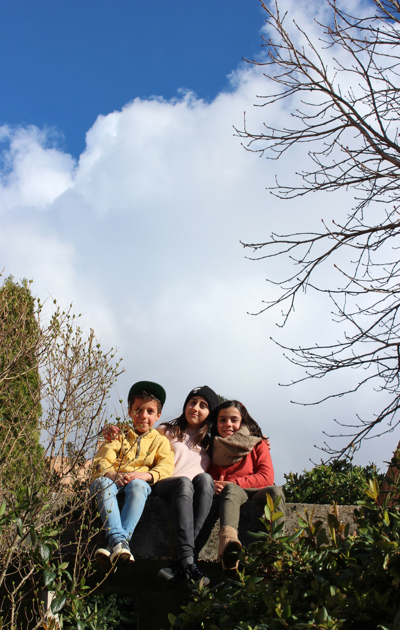

March. Over the weekend of the 5th of March, we all trooped up to their house in Las Rozas, which is just one train stop north of Montecarmelo (± 15 minutes). The only reason we had to take the train was because there wasn’t enough space for everyone in the car, because we had to pick my abuela up as well, so Maria and I ended up taking the train and squeezing into the car from the station to Oscar(my host uncle, as it were)’s house. They live right across from the training centre, La Ciudad del Futbol de Las Rozas, where the national team practice, which was very cool. As we drove past, Marcos pointed out a big poster of the Spanish team winning the World Cup in South Africa in 2010, something he was very proud of. I accidently burst his bubble when I said, yes, I remember the World Cup, it was six years ago. He got very quiet and didn’t talk about football again.
The rest of the afternoon was very pleasant, even though I had to study for a test. Oscar and his wife have three children, all of them younger than Cristina, who is now 13. After lunch they all dressed up and paraded around the house, scaring unknowing adults by jumping out from behind doors in various costumes. To end the night off, Cristina and her cousin did a little gymnastics routine for us in the living room.

Luckily we didn’t have to take the train back home, because Maria had gone to visit a friend who lived nearby and thus there was enough space for everyone in the car.
I have also started going to church, which I was very stressed about at first, but it turned out it was all for nothing. It’s called the Immanuel Baptist Church and takes me about 45 minutes to get there from home. Before going the first Sunday I checked out their website and was surprised to see that they said there were more than fifty nationalities in their congregation. Could there be other South Africans as well…? I dared to hope.
I stepped off the bus the following morning(early, luckily) and walked in through the foyer. A friendly woman greeted me and gave me a program of the day’s service. I told her I was new to the congregation and she immediately gave me a form to fill in, helping me with all the details. I told her I was from South Africa and she smiled and pointed to another woman, already seated, and said, “You can sit next to her, she is from South Africa too.” My heart lurched in my chest, I was so happy. “Her name is Mama Ruth.” She said, as an afterthought.
I made my way over to Mama Ruth and as I approached her and she saw me, I greeted her with, “Molo sisi, unjani wena?”, which is Xhosa for “Hello, how are you?”
As she heard me say these words, her eyes went wide, and she smiled. She then put a hand over her mouth in disbelief. I introduced myself in English and smiled, sitting next to her. When she had gotten over her astonishment, and I had told her about my exchange and being in Madrid until next January, she welcomed me and told me her own story. She had been working abroad since the ‘80’s, living in Spain, Belgium and even Finland. She was retired now and was visiting Spain for two months, leaving again in two weeks time.
I sat next to her for the whole service and was inexplicably content the whole time. I think it was a mixture of hearing the Lord’s Word again for the first time in a long while, singing beautiful worship songs and having someone from home next to me. I was sad to leave, but very excited to come back the following Sunday. Which I did.
Mama Ruth was in the exact same spot as she had been the first week. I greeted her and took in my place. We quietly chatted and waited for the service to start. About five minutes before, someone coming in caught her eye and said to me, “Look, here are the other South Africans I told you about last week.”
And indeed, as I turned around in my seat, a family was approaching us. Mama Ruth motioned for them to sit next to us and they did. As the woman closest to me neared me I greeted her in the same way I had Mama Ruth a week before. The genuine surprise and elation on her face made made my toes curl in my shoes. She actually stopped moving for a moment or two as she took in those simple words, in a language from home, spoken by a stranger. When she came out of her daze she sat next to me and hugged me repeatedly, speaking Xhosa.
“No, no, I’m sorry, that’s all I know,” I said, slightly embarrassed.
She just laughed and asked where I was from. “Cape Town,” I answered. “I am an exchange student here. And you?”
“I’m from Gugulethu,” she said, a sparkle in her eye.
“What, really?” I said, surprised. Gugulethu wasn’t far from the city. We were practically family.
She then introduced me to her husband and daughter. She was a civil servant in the defence force, posted in Madrid for four years of service.
“How long do you still have left?” I asked.
“Two years, I can’t wait to go home.” She said excitedly.
Thus, for my second service at IBC Madrid, the whole third row to the right of the church was chock and block full of Saffers, from all over the country (Mama Ruth is from Vereeniging), happily singing God’s praises and feeling at home. At least that’s how I felt.
Afterwards, I said goodbye to Mama Ruth, thanked her and wished her good luck on her trip back home, and walked out, again feeling rejuvenated and enigmatically fulfilled.
The next weekend (12 and 13 March) we set out to Burgos on a Rotary organised trip. I had to get up very early to get on the bus that would drive us around for the weekend. We set out just before eight o’clock and about three hours later we neared Burgos. The Rotary adults (and some host families) were in the front of the bus and all the children(ahem, sorry, young adults) were in the back. I hadn’t checked our itinerary before leaving, opting for the surprise in not knowing where we were heading next. But, that only led to a lot of confusion along the way and a lot of “Qué pasa ahora?”, “Donde vamos?” and “Qué es eso?” and very little answers.
As we passed Burgos and continued on, later turning off the road and onto a gravel road, driving up a hill, someone said, “We’re going wine tasting!”
I raised an eyebrow, but didn’t say anything.
“Really?” Another person piped up. “That’s so cool!”
“Wait, what?”
“We’re going wine tasting.” Someone else repeated. Soon the message spread through the back of the bus.
I sighed. I looked out the window again, making sure of my argument, then turned around in my seat. I had to set this right. “Guys, we can’t be going wine tasting. Does anyone see any vineyards? ” Smart ass Mart-Marié at her best.
There was a moment of silence in which no one said anything, then a low murmuring started up. I heard something like “But that’s what the Rotarians said,” but chose to ignore it. We’d find out soon enough.
And soon we did. The buses parked next to a ravine cut into the hill and I as I stepped out of the bus (into freezing temperatures) I heard the word “Atapuerca”. It sounded familiar, but I couldn’t remember where I’d heard it before.
Everything soon became clear. We were visiting an Archaeological Excavation Site (UNESCO World Heritage Site, may I add). They had us don hairnets and hardhats and then the tour began – in Spanish. I tired to stay positive and concentrate (today was after all my two month anniversary here), but I’d catch my self time and time again drifting off in my own imagination, or talking to exchange students I hadn’t


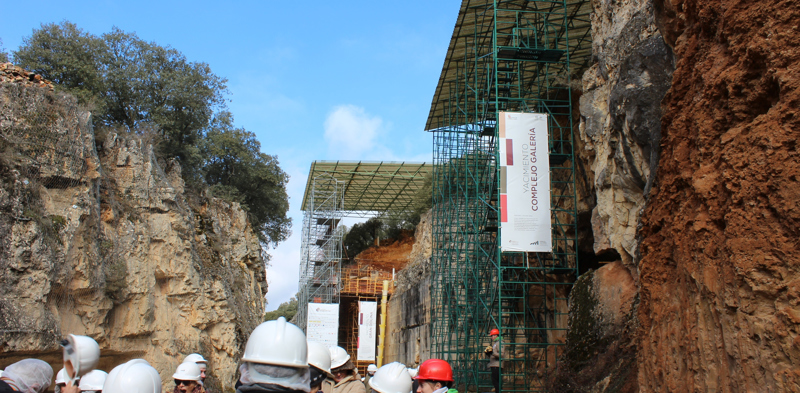
met before. The fact that most of the exchange students were talking amongst themselves didn’t help either. I felt as if I was back in school. I sighed again and told myself that I (my parents) had paid for this and should get the value for my money. Thus I joined the cluster of exchange student who were actually listening and tried concentrating again. But the guide was just pointing at layers of rocks and in between I caught words like “homónimo”, “heidelbergensis”, “fósiles” and “pleistoceno”, so I had a vague idea of what was going on. And my feet were freezing and sun was scarce in between the shadows the rock walls around us cast.
I Googled this next part while writing this and only now realised that I must have studied the word “Atapuerca” last year as part of the Biology syllabus. This is taken from the UNESCO’s website:
“The Archaeological Site of Atapuerca is located near the city of Burgos, in the Autonomous Community of Castilla y León, in the North of the Iberian Peninsula.
The property encompasses 284.119 ha and contains a rich fossil record of the earliest human beings in Europe, from nearly one million years ago and extending into the Common Era. It constitutes an exceptional scientific reserve that provides priceless information about the appearance and way of life of these remote human ancestors.”
After finally getting into the warm bus, we continued on to Cartuja de Miraflores (Miraflores Charterhouse), which is a Carthusian monastery built on a hill just outside Burgos. It was
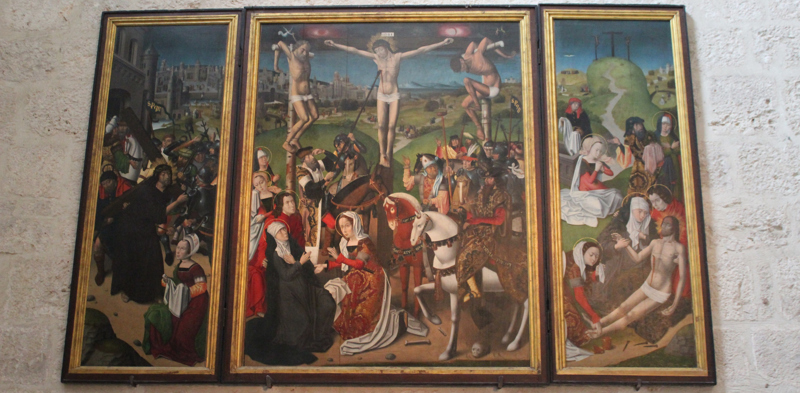
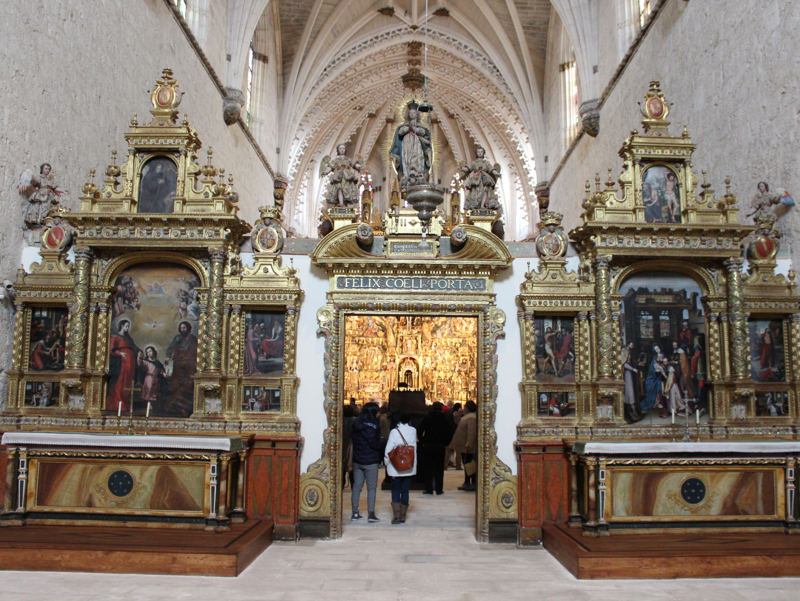
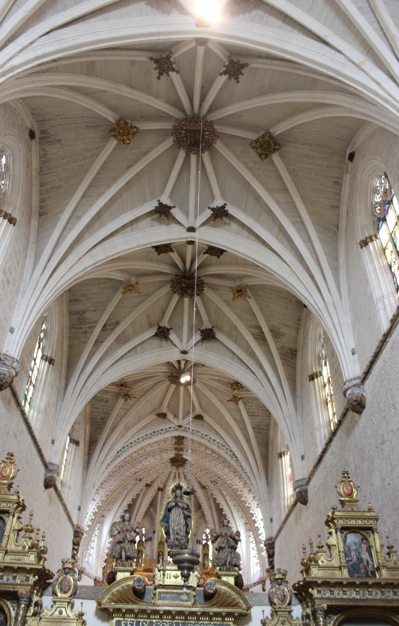
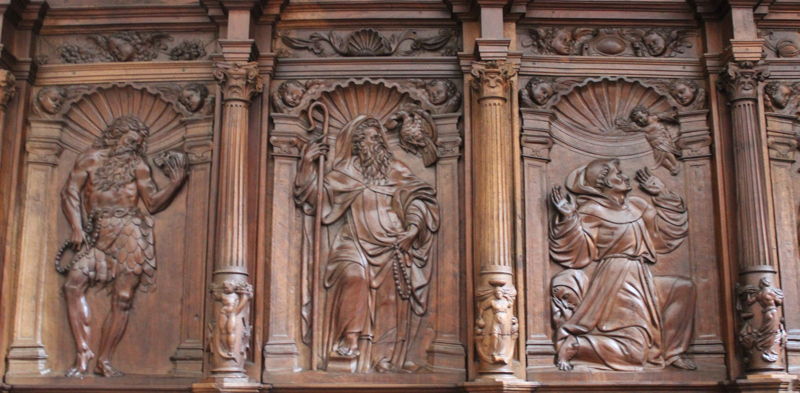
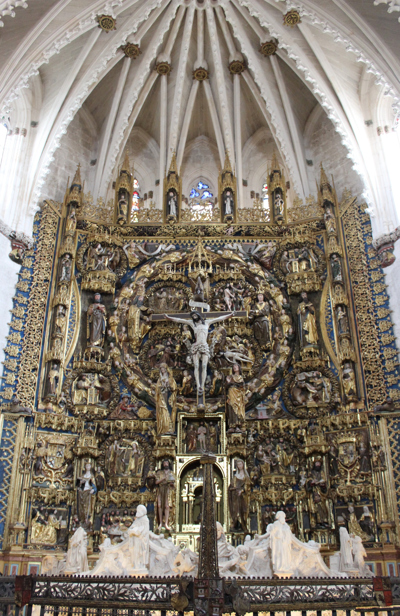
originally built as a summer palace in 1401, but was later gifted to the monks by the Catholic king of that time. It isn’t a big or imposing building, but the workmanship is evidently of very high standard, even to my half trained eye. We had finished off with the chapter on the Gothic period just a week before in History of Art, so all the facts were still relatively fresh in my mind. The equilateral arches, the spires, the rose window… I recognised it all and marvelled at it. It was magnificently beautiful, even if on a smaller scale than other famous gothic buildings. But as we stepped inside the church building, my breath was truly taken away. The ribbed vaulting ceiling, the carved wooden choir stalls, the triptychs set in ornate metal(??) frames. I passed by and under all of these, only to behold the greatest sight yet. At the front of the church was the altarpiece. Oh yes, we had studied this and even just from the pictures I had been speechless. But to see Gil de Siloé’s work in real life…It covered the whole back wall of the church and is a depiction of Christ on the cross and other events around the time of his death. There isn’t a part of the piece that isn’t carved and painted with painstaking detail. I could only stare.
There were other sculptures in the church too, one of them the tomb of Juan II of Castile and Isabella , the parents of Queen Isabella the Catholic queen, also carved by Gil de Siloé. Because they were done in the Gothic period, there is a lot of detail to everything, which makes looking at everything just such a bigger joy. We also went into the museum and the small renovated chapel, which have mural paintings I could look at all day. All in all it was absolutely beautiful and I was so glad to be able to have gone.
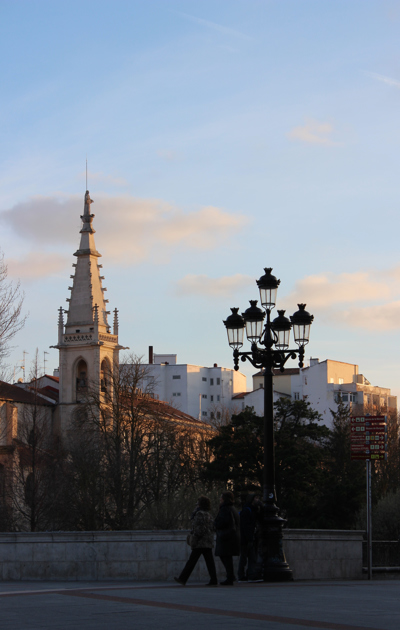
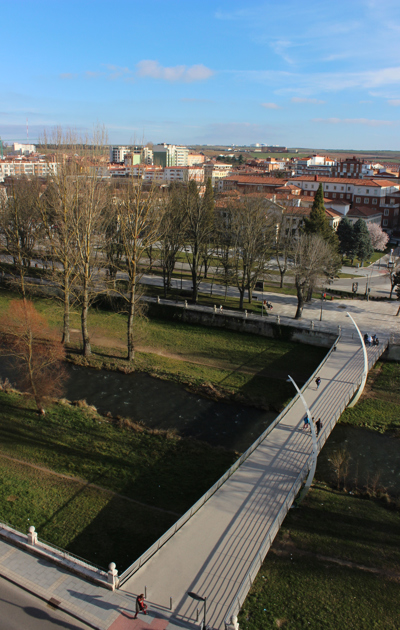
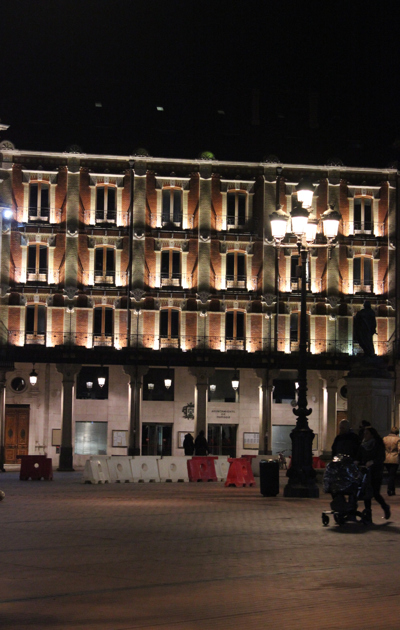

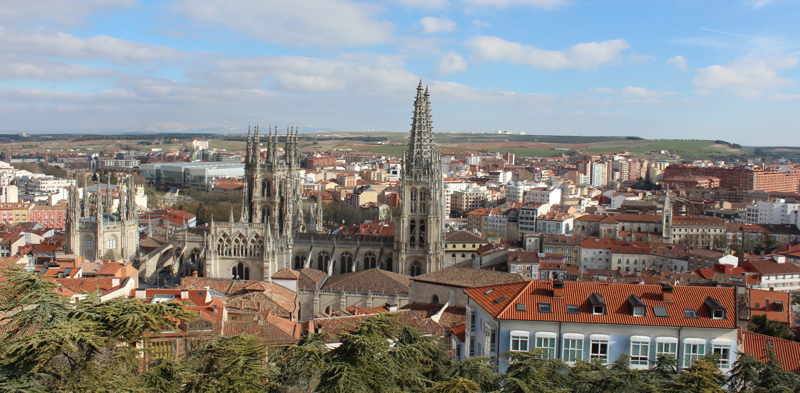
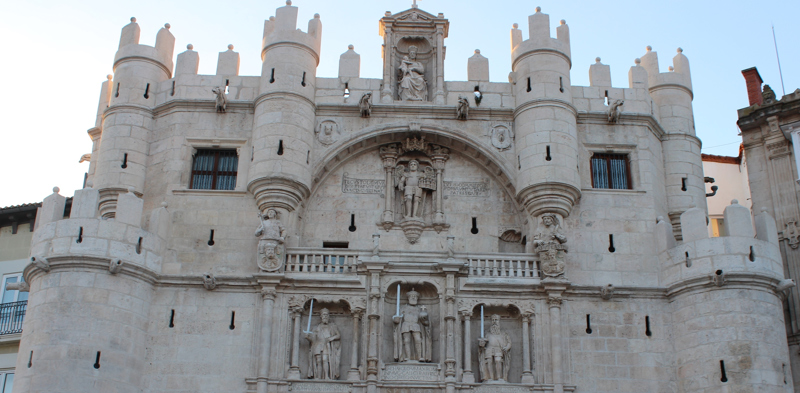
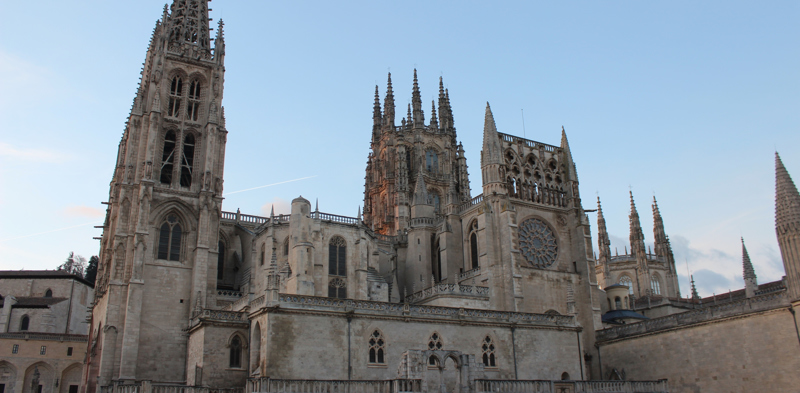
We then stopped for lunch and sat around for two hours, just chatting to one another in blessed English. We also learned the hard way that other people might also understand English, if they weren’t English to start off with. Case in point, an elderly couple took our seats when we went to get coffee inside and instead of asking for out seats back, we opted for stereotypical teenage behaviour: we did nothing and mumbled about it, in English, a little ways off. A moment later I heard the couple speak English to each other and realised they had heard, if not understood the rude things we had said about them. We immediately apologized and got to know them a bit. Whoops.
We eventually entered Burgos and it was smaller than I had expected. Madrid has mostly been my frame of reference until now, but it couldn’t really count because, come on, it was the capital. Anyway, we drove up an another hill, had a beautiful panorama view of the city, drove down again and finally arrived at our hotel. It was on the river Arlanzón and we were lucky enough to have a room with a view of the river and the far off

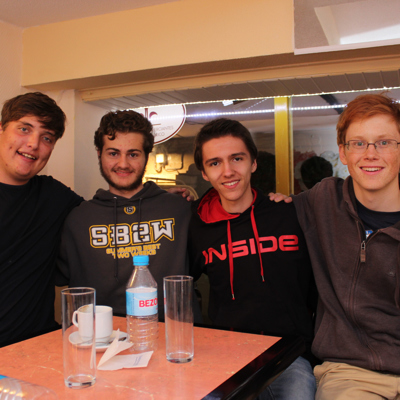
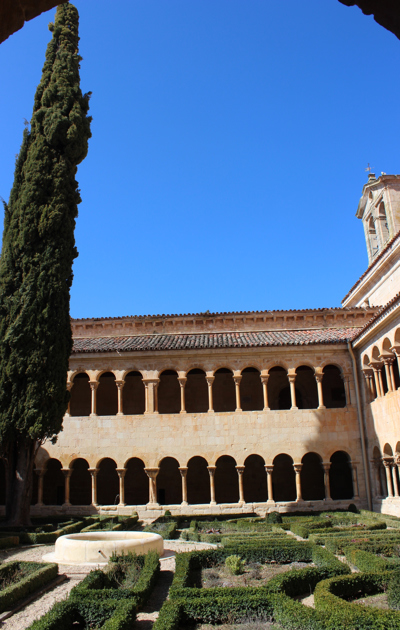
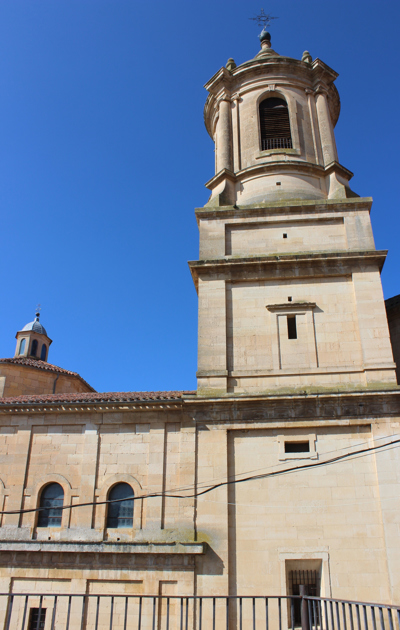
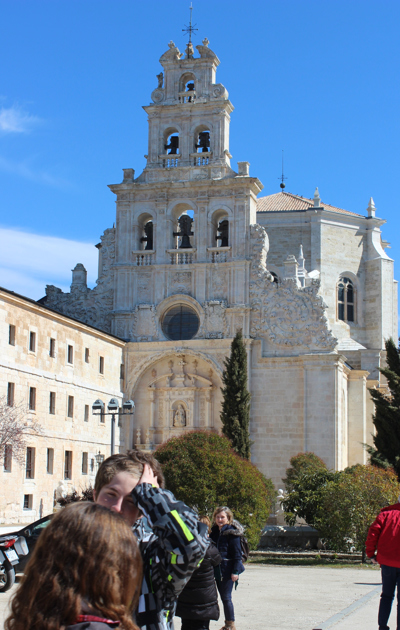
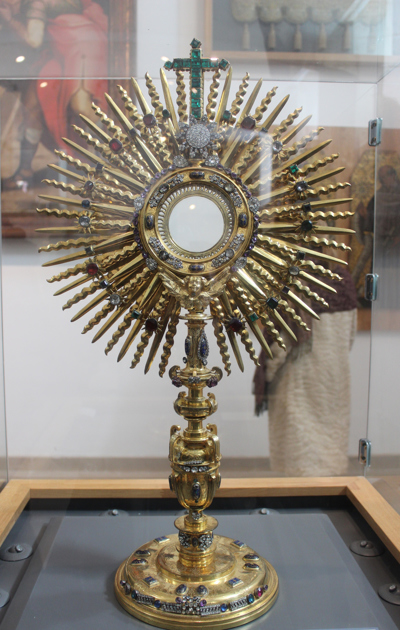
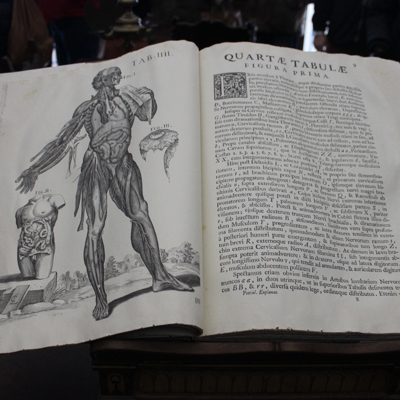
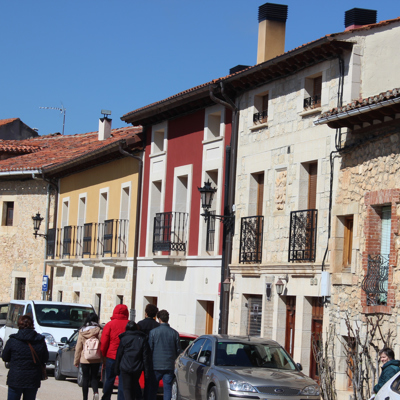
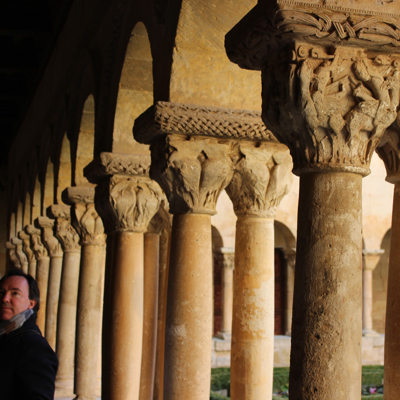
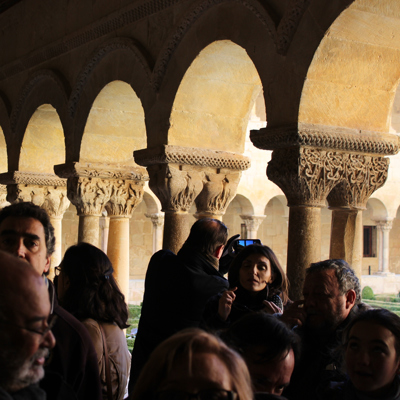
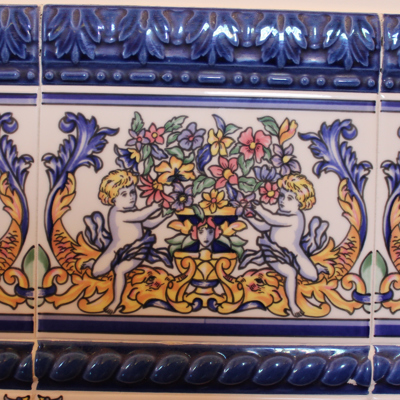
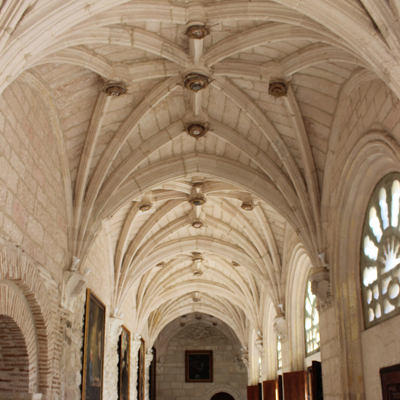
hills. This day wouldn’t stop being awe-some.
In the early evening we set out and did some exploring, being all exchange student-y, which usually encompasses being a) very loud and b) very indecisive as to where to eat with whom, when. We ultimately decided on kebabs (“they’re cheap but still fill you up.”) and the night ended with chocolate con churros in an upstairs café, surrounded by new and old friends.
The next day, after a very comfortable night in the hotel bed, we had breakfast at 8 o’clock, which was very early. But when we got to the dining room and saw the feast they had laid out for us… it’s not called a continental breakfast for nothing. Anything you can imagine for breakfast was available and on constant refill. Fruits, cereals, meats, breads, pastries and more more more.
After eating our fill we got on the bus and drove about an hour an a half south to the very small town of Santo Domingo de los Silos. It is known for it’s monastery which is a very famous, wait for it… no not Gothic period architecture and sculptures, but rather Romanesque, the period before that. We had also studied the monastery in class and to be on my way there, to see it in real life… .We arrived a minute or three after 11, just in time for the start of the mass. Yes, we attended a mass in the abbey, while the world famous monks of the monastery (who have released three albums, one of them going triple platinum internationally) sang Gregorian chant. And when the priest was delivering the sermon and I couldn’t concentrate anymore, I looked up at the ceiling of the abbey and at the pillars holding up the roof and once again I could only marvel at where I was, in that moment. It was something truly special.
We later had a tour of the monastery, pharmacy and adjacent museum – again, all in Spanish – given to us by a monk. For some reason it really messes with my mind to see the monks, dressed in their habits, but wearing glasses, 21st century shoes, or wearing North Face windbreakers. I guess I’m just not used to the idea.
We got onto the bus and were told we were on our way to lunch now. We drove for about another hour through small towns(the roads here don’t go past small towns, the bus has to manoeuvre a way through the impossibly narrow and nearly impassable streets to get to where we’re going, the bus driver earning an applause from the passengers of the bus every time he successfully turns a dangerous corner), seeing cultivated lands, farmed extensively, all in different stages of growth. It was funny, because we had a Geography test the next week on the agricultural practises of Spain, but I couldn’t for the life of me recognize any of what was being farmed with as we drove past field after field.
We arrived at yet another monastery and were confused as to where the restaurant was. We were getting lunch after all. We were led through the (surprise surprise) beautiful building, although I have no clue as to what its name was. I guessed it to be in the late-Renaissance or early Baroque style, going by the the façade of the church we passed and the ceilings of the hallway were were led down. We entered a spacious dining hall with tables lining the walls, seats built into the wall. And there, on the tables, was food set out for us. Ali (who shares my passion for food)and I both squirmed as we realised we wouldn’t have to pay for this meal either. It turned out, this monastery was also a sort of youth hostel, although I never got the exact specifics.
After a very filling lunch (three course meal with coffee at the end), we got on the bus, everyone more than ready to go home. But no! The fun would not stop. From where we had lunch we drove to Aranda and had a tour of the wine making facilities of one of the vineyards there. As it was again in Spanish and I already know a little bit about wine making thanks to where I grew up, I drifted off in my own thoughts again and again. Only later did I find out (thank you Anne for the info in your blog) that the talk had been about “How one makes wine in the Ribera del Duero, one of the eleven regions of quality wine making in Spain and named Wine Region of the Year 2012 by the prestigious Wine Enthusiast Magazine”. Quite fancy.
As the sun began to set we began the journey back home. “Don’t worry,” we were told, “it’ll only be about a two hour trip, then you’ll be home!”. That became very funny when we hit heavy traffic as we got out of the mountains just north of Madrid. The two hour journey turned into three and a half (maybe not, but it felt like it). And then my phone died, so that was the ultimate cherry on the cake which was my weekend.
But, I did finally get home, albeit later than expected. I was incredibly tired, but more than anything, I was happy. The trip had been a success, I had taken a mountain of photos of beautiful places, met new people and continued building on the relationships I already had. No traffic jam could take that away from me.
1.
1. Before I go
2.
2. Flying out
3.
3. First day of school
4.
4. The weekend in Guadarrama
5.
5. Madrid and the World in one weekend
6.
7. Some singing and a trip to Salamanca
7.
8. Almost missing the bus
8.
9. A typical day in the life of and some other observations
9.
10. Exploring Madrid some more
10.
11. Kom ons verkeer bietjie akademies.
11.
12. Take me to church... and Burgos
12.
13. Semana Santa
13.
14. El Camino
14.
15. Lasts
15.
16. Verano
16.
17. Last time around
17.
18. Las Navidades
Share your travel adventures like this!
Create your own travel blog in one step
Share with friends and family to follow your journey
Easy set up, no technical knowledge needed and unlimited storage!